Digital Serving/Streaming on the Cheap using a Raspberry Pi
Part 3: Sound Quality Evaluation
By Steve Graham
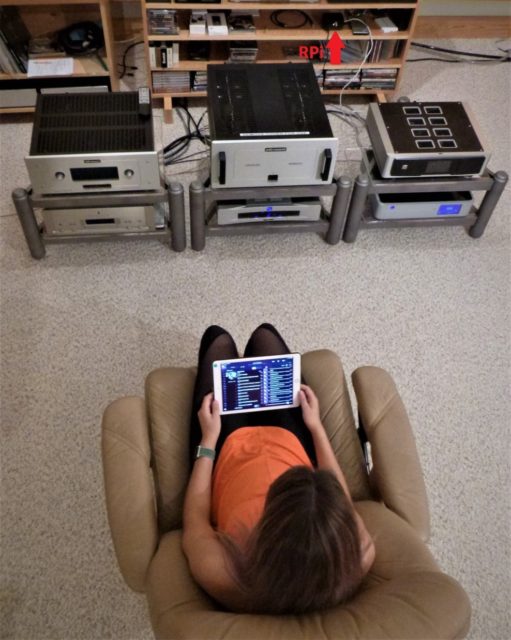
Are you contemplating a plunge into file-based audio? Have parts 1 and 2 of this series tempted you to take the leap? Fear not. A Raspberry Pi-based system is not a big jump, technically or financially.
Components like my NAD 50.2 are a well-thought-out solution that will rip CDs, store them on internal drives then serve and stream them to an external D to A converter. The NAD will also permit the addition of files to its drives through a home network. It comes in an attractive case, and NAD has world-class customer support. There’s even a NAD service depot 50-minutes from my home, and I live in the boonies. The 50.2 queries the NAD mothership on a regular basis and informs owners of no-charge software updates. Of course, there is a price to be paid for all of this. The NAD 50.2 isn’t cheap – but it’s an easy choice for convenience-loving but computer-phobic audiophiles.
Another option might be something like one of the Lumin players. They will serve and stream from an external USB drive and have built in DACs that will output an analogue signal to a user’s amplifier. If a user doesn’t already have their CDs ripped to a drive, they’ll be in for a bit of work using a ripping program in concert with a desktop or laptop computer.
Both the NAD and Lumin support streaming music services and internet radio. There are many other file players that offer some or all of the features of the NAD and Lumin, but my experience with these has been limited to ogling them at HiFi dealers in pre-COVID times.
The thing that scared me off file-based audio, up until late 2108, was the complexity of setting up a separate server and streamer on a home network and connecting them to my music system. I didn’t want to play files from a PC directly to a DAC either. I’d been warned by an audiophile buddy of the software frustrations and sonic compromises that route entailed. (Editor’s Note: Agreed. But Mac is a different story) The NAD 50.2 is about as close as one can get to plug and play file-based audio. It had a sufficiently low enough level of setup complexity that I didn’t get freaked out.
Raspberry Pi Serving/Streaming
The cool thing is that a RPi can, with a sympathetic hardware addition and the right software configuration, do many of the things a NAD 50.2 can do for a fraction of the cost. It even sounds pretty good too. (An RPi-based system will require users to rip their CDs and transfer the data files and any other music files they own to a USB hard drive.)
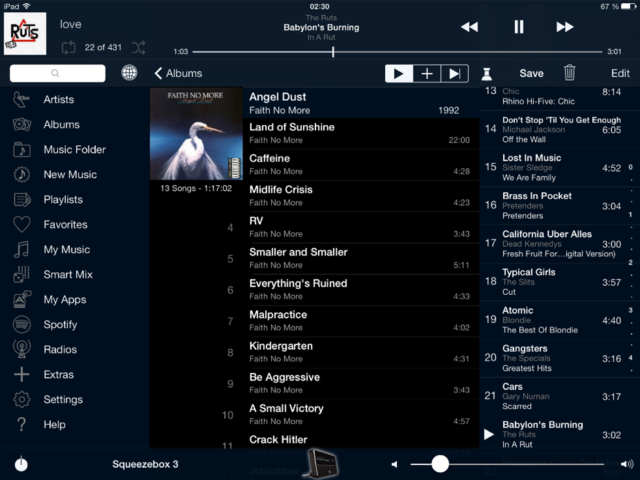
The bits and pieces I’ve assembled yield a budget-friendly solution for those willing to take the (small) leap to file-based playback. As an audio component it doesn’t have any visual appeal, but it’s small enough to be hidden away behind an equipment rack. A low cost, third party app running on an iPad looks slick, or slick enough to me. Sounds like a win-win as far as I’m concerned.
System Context
My usual reference system: PS Audio AC regenerator, NAD 50.2 music player, PS Audio DirectStream DAC, ARC REF 3 line stage, ARC REF 110 power amp, Spendor D9 speakers. Instead of the AES/EBU cable I normally use to connect the NAD to the PS DAC, a 75-ohm coax cable from HAVE (see part 1) was employed. This was so I could use the same cable to connect both the NAD and the digital HAT on the RPi to my DirectStream DAC.
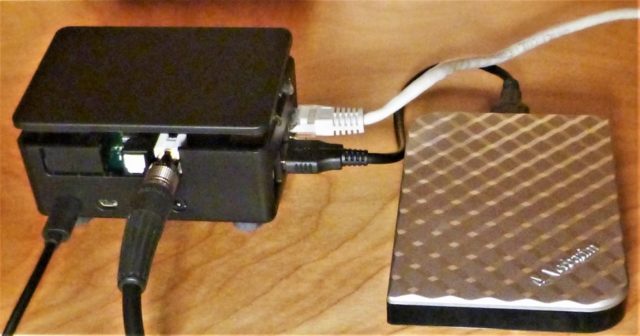
You Should Know
Timing errors, a.k.a. jitter, is the nemesis of digital audio. My NAD 50.2 is regarded as outputting a clean, low jitter signal. The PS DirectStream DAC is also known for its good rejection of incoming jitter. Yet upgrading the digital data cable, as I did in the review of the Audioquest Carbon AES/EBU data link, yielded a noticeable improvement.
I don’t want to get into the whole cable controversy and measurements vs. listening discussion, but if you think measurements are the be all and end all, you’re in the wrong hobby. If numbers matter to you, take up drag racing. There’s only one number that matters with drag racing and it’s indisputable.
So where does that leave us? A different DAC might sound more or less different when comparing these two digital sources. Most won’t use an RPi with a multi-thousand-dollar DAC. Making the RPi with HAT board punch above its weight should better reveal its strengths and weaknesses. Will differences and/or deficiencies be as noticeable with a $500 DAC? Who’s to say? Some differences might be down to the digital interconnect, too.
Covid Albums
Maybe it’s an age thing, but in times of stress the music I turn to might be construed as a bit well, sappy. Be that as it may, they formed the basis of comparison between the NAD 50.2 and the Raspberry Pi.
Loreena McKennitt, An Ancient Muse
Bruce Cockburn, Salt, Sun and Time
Steve Winwood, Back in the High Life
UB40, Rat in the Kitchen
Yaz, Upstairs At Eric’s
All of the above were 16/44 CD rips.
To hear how the RPi performed with high resolution files I placed a 24/192 download of Miles Davis Kind of Blue to the USB drive too. The digital files on the USB drive connected to the RPi setup were copied from the drive in my NAD 50.2. This ensured identical data was streamed by both sources.
Loreena McKennitt, track: Penelope’s Song
As much as I’m a fan all Ms. McKennitt’s recordings I find that her voice isn’t captured with what I would consider to be optimal sound quality. So, with most of her tracks I value reproduction that does the least harm, not that I want things smoothed over. That would only harm the generally well recorded instrumental accompaniment.
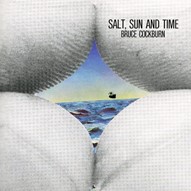 Bruce Cockburn, track: All the Diamonds
Bruce Cockburn, track: All the Diamonds
More Canadian content. This track makes me think of things bigger than myself. I like the metaphor of sea and ships too.
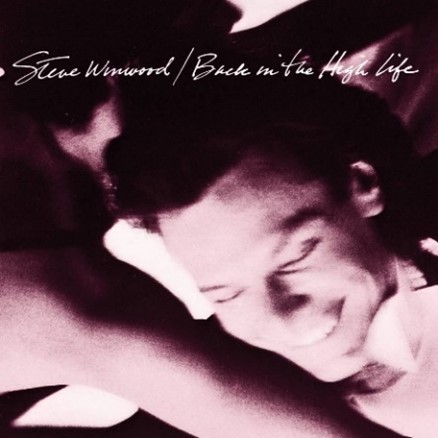 Steve Winwood, track: The Finer Things
Steve Winwood, track: The Finer Things
I’ve been a Winwood fan ever since his Spencer Davis Group days. A reflective track by a 60’s rocker that has matured.
UB40, track: Sing Our Own Song
A fun and catchy tune that also address issues of social justice, something that seems in short supply these days.
Yes, I know, it’s eighties synth-pop. But I don’t care, I like this song and others on the album too. The unnaturally fast synth note attacks I use for judging a system’s “startle” factor.
The Miles Davis 24/192 file:
Sound Quality Observations
I was going to run through each song individually, but sonic differences between the two sources were consistent from track to track. The first thing to say is that the RPi source sure didn’t sound like it cost about 1/20(!) the price of a NAD 50.2. The differences were mostly the reproduction of recorded space, ease during loud passages and general musical flow, the NAD being the superior performer in all instances.
The NAD presented soundscapes spread out between the speakers and in greater detail. Instruments and voices didn’t “stick” to the speakers as much as they did with the RPi source. The RPi seemed to congest a bit on loud passages, whereas the NAD just sailed right through without strain. I think this and the slight though noticeably more nuanced detail made the NAD an easier, more relaxed listening experience. The NAD just seemed to breathe music, yet at the same time have great pace, flow and drive. A DAC less accomplished than the DirectStream might not reveal these differences, or do so to a lesser degree. I didn’t consider the RPi to be deficient in the pace and rhythm department. Music had equally good propulsion and momentum from both sources. I have to say, the price/performance ratio of the Raspberry Pi-based source places it near the top of the over-achievers list.
The differences between the two sources was more pronounced when playing the 24/192 Miles Davis file. The improved ease, flow, sense of space and detail was more noticeable with the NAD than it was when comparing 16/44 files. The Pi passed 24/192 data without any issues. If most of your music is sourced from CD rips or similar resolution files this could be a non-issue.
When using the iPeng app, access to a wide variety of internet radio streams and streaming music services is possible. I briefly listened to a few radio streams, but not seriously as they use lossy compression schemes.
Even though the RPi-based source was inferior to the NAD 50.2, it wasn’t that inferior. All things considered, the Raspberry Pi with the HiFiBerry Digi+ Pro HAT board is a:
Five Freaking Star Value
Shopping Scenarios
- Let’s suppose you currently have a DAC with a S/PDIF input. The RPi I built with the HiFiBerry Digi+ Pro should work very well. Total cost, including shipping and tax, for a Pi 4B Budget Kit, the Digi+ Pro HAT and a 16GB MicroSD card: $165.93 Canadian. (All prices quote in Canadian dollars. For US$ prices divide the Canadian amount by ~1.35). Add a digital data cable, ~$20, and another $90 (tax and shipping included) for a 1 terabyte USB hard drive. The other near-essential is a control app for a mobile device. The iPeng for iOS devices cost $13.55. Apps for Android devices are about $10. Total: about $290 (~$215 US), complete and ready to roll. See the RPi order details in part 1 of this series.
- If you don’t have a DAC and want to incorporate one with the RPi: Substitute the HiFiBerry Digi+ Pro HAT with a HiFi Berry DAC+ Pro HAT. I haven’t heard this DAC but at $56.95 it’s not the least nor the most expensive option. A digital data link won’t be needed and chances are you already have extra analog interconnects lying around. About $270 (~$200 US) all in and you’ll be good to go.
- If you want a more advanced digital-out HAT the ALLO DigiOne Transporter is more accomplished than the HiFiBerry on the unit I built. The ALLO sells for $131.95. You’ll probably want to add an audio grade power supply ($14.95) and an acrylic case ($18.95). An upgraded digital data cable should likely be employed, figure $75 or so. Don’t forget an app for your mobile device and a 1TB hard drive and the total tab comes to about $450 (~$330 US).
- Taking a different tack, suppose you don’t have a DAC but want one external to the RPi. Start with scenario 1 above and add a Schiit Modi DAC for US$99 (about $170 Canadian delivered). Total system cost: about $440 CDN (~$325 US). The Modi has multiple digital inputs. If your television and music system share the same space, you could use the coax input for music and the Toslink (fibre optic) input for TV sound.
- A more accomplished system with a new DAC? Consider scenario 3 (ALLO DigiOne) plus a Schiit Modius DAC US$199 (about $340 Canadian delivered). Total system cost: about $790 CDN (~$550 US).
- Really want to push the boat out, digitally speaking? Add any other DAC up to $1,000 (or more?) with scenario 3 (the ALLO option).
I think you can tell where I’m going with this. A Raspberry Pi with a good, or better, HAT board is an excellent sonic investment. Spend an equal or, budget permitting, larger proportion on the D to A conversion rather than the server/streamer. Doing so will result in the best price/performance trade-off.
For all of the above scenarios an Ethernet cable to connect the RPi to your switch, router or modem will be required when performing the initial setup. I’m assuming you have a spare kicking around or can pick up one cheap at a discount store. I believe once programming is complete it’s possible to run the RPi over WIFI for day to day use, see below.
Final Thoughts
The server/streamer I assembled, though not the least expensive route to employing a Raspberry Pi in the service of audio, is at the lower cost end of the spectrum. I used the basic switch mode power supply. Linear power supplies are available at prices that are several multiples of the cost of an RPi board. These could/should offer better performance if you are prepared to accept the financial hit.
I encourage those taking the plunge to become a member of the Squeezebox forum. Even though I asked a dumb newbie question, a kind person gave me a useful, non-condescending answer. https://forums.slimdevices.com/forum.php
I mentioned at the beginning of the setup document attached to Part 2 that I thought it possible to run the RPi via a WIFI connection. I’ve done a bit more looking around the piCorePlayer site and it looks fairly straight forward to implement. Some RPi boards have built-in WIFI, if not a WIFI USB dongle can be used. It would appear that a wired Ethernet connection is the easier option for initial setup, but WIFI should be a fairly easy transition afterwards. Going the WIFI route would relieve potential users from the requirement of running Ethernet cables to their music system for everyday RPi usage. https://www.picoreplayer.org/how_to_setup_wifi.shtml I’ve tried the WIFI with the Pi 4B I’m using (built-in WIFI on the board), and it works. It seems to take slightly longer to react to commands from my iPad app, but I suppose that’s down to the two WIFI “skips”, iPad to router and router to RPi.
Happy listening to all who take the Raspberry Pi server/streamer leap.



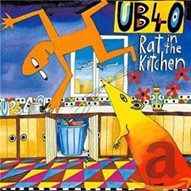
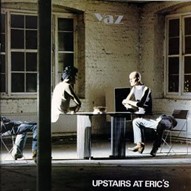
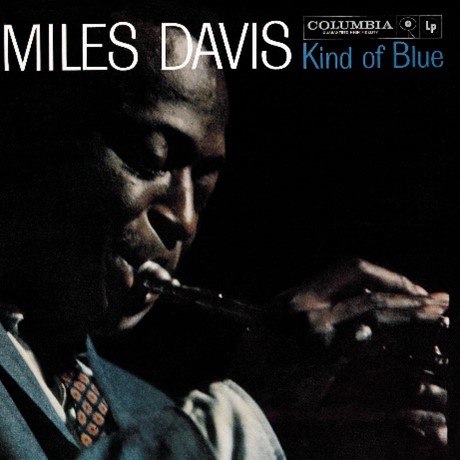

Seems to me there’s a basic flaw in your comparison.
A better comparison of the strenghts of a Pi would be to use the USB out of the Pi directly into a good DAC (even a high-end one) that you know has a well implemented USB input.
Then you are comparing how the Pi works as a transport vs an expensive transport. In your comparison you are comparing a $50 DAC in the Pi to a high end DAC.
If you do my suggested comparison in a blind test, I think you will be shocked at how close the Pi comes to very expensive network endpoint solutions that have the same functionality.
Hi Steve: Great article/review; insightful -and honest.
The Raspberry Pi (2B, 3B+, ‘4’ -not recommended/too noisy) or alternates, including the mentioned Allo are all SBC’s (Single Board Computers). The Raspberry Pi foundation/boards by far the greatest following/support, priced right under $50.00 CAD (2B/3B+) -and’sound’ just fine. Add W/W (5V/3A)P/S, a $10. case/shipping = about $100. (CAD)
Do NOT skimp on Ethernet or USB cable; get minimum AQ (Cinnamon), Straightwire USB (about $40.CAD/1-1.5m)and Wireworld’s excellent Chroma Ethernet cable -also reasonably priced. The SQ improvements are profound -particularly appreciable with Internet radio streaming -that although you shun, can sound amazing (128 kb/s). Today;s compression/MP3/ACC algorithms are light-years ahead of what we originally recall and in fact was back then -bad. Not today. Today, it can be scary good. Cost = UNDER $100. (CAD)
Start with a decent 5V/3A wall-wart P/S $15.00 (Amazon.ca). Get the one that uses a micro-to-standard USB cable as the power ‘cord’ from wall-wart transformer to SBC.
For ‘software’ (Music software/program Internet Radio) sign up for ‘Volumio’ ‘RUNE, or Moode) ‘Single-User’ – FREE
For DAC, consider one of HRT’s amazing USB DAC’s: anyone new or used: HRT ‘II’, ‘II+’ ‘III’ or ‘HD’. These things sound fantastic-all of them, whether 24/96 or 24/192 models. Incredibly, I stumbled upon one (HRT III) that a CAM’er was giving away (sold so cheap) I couldn’t resist.
Aternately, as you stated, consider Schitt DAC’s -new/used $100-$`150. or the myriad of Chi-Fi DAC’s; one being the great little SMSL ‘SU-8′ (9038 ESS-chipped) DAC.
My primary use (of five Pi’s/with differing DAC’s) is to both peruse and listen to alternate radio stations on each/every one.)
My experience thus far connecting Pi to HDD’ results in compromised performance/sound. As a result, I turned to a commercial Streamer that sounds much better via media-files (HDD music drives -and improved Internet Radio SQ in the same areas you noted. PLUS, with a commercial Streamer/ Player, the software/music ‘App’ is typically far better/stable-smoother than the entry-level ‘Pi-type’ Streamer and free (or paid/but cheap) software such as ‘Volumio/MPD’.
Cambridge Audio Streamer/Player’s including ‘NP-30’, ‘Stream-Magic I/II’, ‘CXN I/II’ and ‘851N’ are excellent/recommended.
It’s worth the effort (and the modest investment) to see just how far ‘computer’ audio has come and the sheer breadth of radio stations/music available over the Net.
And, no better time than the present to discuss Streaming as much of the unknown BS over the past several years concerning what exactly impacts/ improves SQ has been sorted out, saving us ‘late-comer’s’ considerable frustration, time and money.
peter jasz
Thank you both for taking the time to comment.
I use a different methodology for DIY projects than I do for straight equipment reviews. I like to imagine a goal or aim point for a DIY project as it helps me focus on the end use. There are many options with a DIY undertaking so I chose the one that best suited my circumstances, while trying to keep in mind what you faithful readers might like. I don’t often hit a home run, but I try.
The reason I didn’t use a USB DAC for the SQ evaluation was that I didn’t have a decent one to hand. Having a good SPDIF-input DAC was the reason for purchasing a SPDIF output HAT board. (The RPi I built will soon go to a new home where it will be used with a NAD integrated amp that features a SPDIF input.) As audio quality was not likely on the radar of the RPi developers a USB filter/regenerator between the Pi and external DAC would likely prove beneficial if going the USB DAC route. My aim was to shoot for the highest possible SQ at the lowest possible cost, hence the SPDIF output to an external DAC. To my ears I think I was reasonably successful.
I could have gone the DAC HAT route but then I’d have been comparing two server/steamer plus DAC combinations. The digital-out HAT just let me concentrate on one variable, the two server/streamers.
I am aware that the RPi 4 might be inferior to the 3, from a SQ perspective, due to more noise from the 4’s faster processor. I decided to use the 4 anyway as it might be around longer than the 3 and I wanted to ensure that the piCorePlayer would work with the 4. (Maybe someday there will be a market for NOS RPi 3s the same way there is for NOS tubes. 😊)
Perhaps the 4 might be better if using a USB DAC and streaming via ethernet as USB and ethernet don’t share the same data bus like they do on the 3.
In-depth SQ discussions where I haven’t heard your RPi implementation and you haven’t heard mine are, in my opinion, at best fruitless.
Writing is something that happens mostly in a vacuum. The best I can do, like assembling an audio system, is please myself. Sometimes this meets other’s expectations and sometimes it doesn’t.
Again, thanks for taking the time to comment. It’s nice to hear back from the vacuum.
Steve
Hi Steve: Spdif (digital signal transmission) is a terribly flawed format. Period.
In your reply, you reference the’cheapst’way to implement a SBC (Raspberry Pi as Streamer) into a hi-fi system. And that may be if you can purchae a ‘Hat’ for $50/$100.
BUT, one could also purchase a dedicated USB (and spdif provisioned) outboard DAC (try Schitt Modi2 Uber/3 -if no other choice – for about the same money (new/used).
OR the amazing SMSL SU-8/$250 USD) USB/Spdif DAC utilizing the impressive ESS-9038 chip-set -complete with 9 digital filter choices! Filter ‘choice’ is very important -and very audible.
Quite simply, frankly and accurately, USB (asynchronous) data transmission BLOWS AWAY any spdif connection; don’t bother with it if other options are available; ‘i2S’ ‘USB’ ‘Word. Clk’ (HDMi/RJ-45).
That’s not to say we can’t fin/enjoy gret sound via spdif , but my experience has proved this to be a very frustrating shot-in-the-dark, ‘hit-miss’ proposition ver decade of experimenting with this digital connection method (coax, BNC, AES/EBU, Toslink)
And finally, with a few years (1/2 lol!) of “extra” experience under my belt with respct to computer/Pi Streaming, I don’t agree with your asseetion that:
” …In-depth SQ discussions where I haven’t heard your RPi implementation and you haven’t heard mine are, in my opinion, at best fruitless.”
Far from it.
Even if you “heard” my implemnations, would it be my choice of DAC, cable, my power choice (Wall, Balanced/Re-Gen), set-up, software choice -OH-SO_IMPORTANT -MPD Music Player Daemo- being particularly excellent -part of the ‘Volumio’ Music Player.
peter jasz
I’m puzzled by comments the Pi 4 might be noisier and thus inferior to earlier models. Is this speculation, or has it been demonstrated? I would be interested to read the findings if someone could post a link..
Hans Beekhuyzen posted a video about a year ago comparing the 3B+ to the 4B. See link below.
https://www.youtube.com/watch?v=cjqEPyMr1zI
Cheers, Steve
I’m not as good at discerning changes in Pi OS music systems, but I must confess, I recently out of curiosity switched from Ropieee Roon Endpoint to ROONBRIDGE on Dietpi. I used the Allo GUI, available here.
https://dietpi.com/phpbb/viewtopic.php?t=2317
Must say to my ears there is something more musical about ROONBRIDGE. There seems to be a longer decay to notes especially piano. A touch more detail and richness to the playback. Not fatiguing at all. Interesting.
Follow up to DH’s comment: DH, I reread your comment and I believe we might have had a misunderstanding. I wasn’t comparing the DAC in the Pi with my outboard DAC. I was comparing the Pi, outputting a SPDIF signal through the HAT board, to my NAD 50.2 outputting SPDIF both into my PS Audio DAC. Or maybe I misunderstood your comment. At any rate, thanks again.
Regards, Steve
For the curious Archimago, has done some optimization of the 4B, perhaps ‘quietening’ it down more in line with the 3B, whilst still maintaining some of the newer model’s advantages. Trying it now.
http://archimago.blogspot.com/2020/10/musingshow-to-raspberry-pi-4-touch.html
Ever since Steve Bakes a Raspberry Pi – Part 1, I knew this could be for me. Steve mentioned, budding but impoverished audiophiles that could benefit from an inexpensive high-value server/streamer, that could be me too.
Given the shopping list, detailed instructions, a little technical aptitude, and play by play audiophile assessments by Steve in the articles Parts 1 through 3, I must conclude / exclaim Pi is served!
The instructions by Steve, in Part 2, were clear when the equipment and software was in front of me. I will emphasize, if there is any doubt while following the instructions, simply stop before guessing and review the instuctions again. Any uncertainty in retrospect was unfamiliarity with the setup software. This quickly improved while using the setup software. This was the only speedbump in the entire setup / installation.
Placement of the instructions in Part 2 of 3 of the article also served to convince me how attainable the project could be. Part 1 had already dispelled concern of audio quality and this was actually a project as opposed to an experiment.
Thanks to Steve for taking the potential experiment away so anyone that takes-on the project will most certainly be pleased with the results.